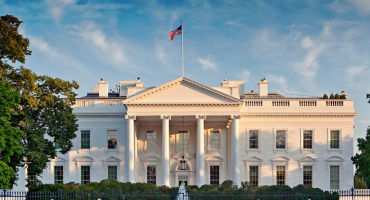- Multi-Asset Strategist
- Boston
Skip to main content
- Funds
- Insights
- Capabilities
- About Us
- My Account
Our Funds
Fund Documents
Global Multi-Strategy Fund
The views expressed are those of the author at the time of writing. Other teams may hold different views and make different investment decisions. The value of your investment may become worth more or less than at the time of original investment. While any third-party data used is considered reliable, its accuracy is not guaranteed. For professional, institutional, or accredited investors only.
Recent regulatory announcements have sent shivers through a wide swath of China’s economy, including the technology, finance, gaming, and property sectors, and tensions between China and the US continue to simmer. But while I understand the market’s reaction to these risks, I take a long-term perspective on China’s investability.
I believe China’s leadership sees increased integration in the global economy and markets as a long-term priority and perhaps even an imperative. It’s hard to miss the benefits the US reaps as a magnet for foreign capital, a source of global investment capital, and the home of the world’s de facto reserve currency. I think China will work to develop robust public and private markets and thereby make itself a destination for global investment. It will seek to remove the “inclusion factor” discount limiting the weight of its domestic A-shares market in global market-cap weighted portfolios. That alone would be a meaningful tailwind, creating a substantial base of global buyers for stocks not widely held today.
But that “bonus” return likely pales in comparison to the potential benefits of the continued growth and development of China’s economy. As my colleague Santiago Millán reminded me, China, for all its gains, still trails not only developed markets like the US on a GDP per capita basis, but also EM “success stories” like South Korea and Hong Kong.
While the specter of deglobalization and geopolitics looms over China’s trade and GDP growth, this does not mean the country can’t build global alliances and grow its domestic economy. Indeed, shifting from export-driven growth to domestic market expansion is almost certain to remain a priority. And I believe China can offer compelling returns even if geopolitics slow trade and GDP growth.
Stock market performance has historically been uncorrelated (and even negatively correlated) to economic growth, as “max growth” countries’ massive equity capital needs can limit market upside. Slowing, but still perhaps world-leading, GDP growth — which I expect China to realize in the decade ahead — may be the “sweet spot” for Chinese equities.
Some investors may avoid China for political or ESG reasons, but it’s important to recognize that many countries (emerging and developed) face challenges on this front. From a climate perspective, our research suggests that China is well-positioned, relative to global peers and especially other EM countries, in its risk exposure.
In the near term, I’m focused on the prospect of further top-down regulation of China’s corporate sector, especially as 2022 is a transitional year marked by the 20th Party Congress. Even as Chinese equities struggled in 2021, we found that flows remained positive. But if the regulatory push continues or accelerates, flows could reverse.
My bias, however, is to approach any 2022 China “crisis” (in politics or markets) as a buying opportunity. I have faith in China’s long-term potential and am skeptical that geopolitical tensions will have a lasting market impact, so a near-term sell-off on top of weak performance in 2021 could signal a floor.
Moreover, some “negative” regulatory moves may in fact be positive signs. Perhaps the delisting of overseas-listed Chinese companies is not a sign that foreign capital is unwelcome but reflects a desire for regulatory control as China opens its markets wider. Maybe increasing willingness to tolerate corporate bond defaults is not intended to leave foreign investors holding the bag, but to allow greater risk discrimination in how capital is allocated, in line with developed-market peers.
From an implementation perspective, the “inclusion factor” leads me to favor investments that lean heavily (although perhaps not exclusively) on the A-shares market. Investors with broad EM exposure may justify “incremental” exposure to A-shares on the grounds that a portfolio benchmarked to the MSCI EM or MSCI ACWI excludes 80% of a multi-trillion-dollar market. In addition, because A-shares market participants skew toward less seasoned individual investors, active managers may have an edge. (There are risks to my views, of course. For example, my colleague Owen Lamont worries that in a state-directed economy, privately owned enterprises may increasingly be run like state-owned enterprises, despite investors’ hopes for the opposite outcome.)
Another argument for active management comes from Wellington’s on-the-ground research analysts, who argue convincingly that much of the recent regulatory push was reasonably well “telegraphed” by policymakers. This gives me confidence that forward-thinking managers may be able to sidestep the brunt of any additional regulatory fervor through attention to the stocks and sectors they invest in. As Industry Analyst Juanjuan Niska wrote, “It’s better to invest along with the government, in sectors and companies that help the government achieve long-term goals…. I don’t think government interference or regulation will necessarily hinder economic growth, as quite honestly the Chinese people and companies are used to this and accept it.”

Time to diversify your diversifiers with hedge funds?
Continue readingCredit: the power of flexibility in an uncertain world
Continue readingEarly thoughts on historic hike in US tariffs
Continue readingWhen will capital come back to private equity?
Continue readingCould “Liberation Day” trigger a shift in capital flows?
Continue readingThe changing face of Europe: regime change gathers pace
Continue readingURL References
Related Insights
Stay up to date with the latest market insights and our point of view.

Time to diversify your diversifiers with hedge funds?
Christopher Perret highlights potential benefits of adding uncorrelated strategies, such as hedge funds, to portfolios to navigate turbulent markets.

Credit: the power of flexibility in an uncertain world
Uncertainty in credit markets can create opportunities for investors, provided allocations are flexible enough to benefit. But how can investors balance flexibility with discipline?

Databricks deal overview
Head of Late-stage Growth Matt Witheiler and Global Industry Analyst James McNay discuss their work together on Wellington’s investment in Databricks, highlighting the company’s innovation in AI and data analytics amid the evolving tech landscape.

Early thoughts on historic hike in US tariffs
Macro Strategist Michael Medeiros explores the significant economic and market implications of the latest US tariffs, highlighting potential recession and inflation spikes, and the impact on global trade relations.

Lessons learned from a top-heavy equity market
Can the Magnificent Seven stocks continue to dominate the equity market? And what can asset owners do when markets are narrow? Head of Multi-Asset Strategy Adam Berger and Global Equity Strategist Andy Heiskell discuss the challenges and opportunities.

Sacrificing stocks on the altar of trade
Brij Khurana discusses the Trump administration's new stance on trade and its impact on the US economy, global markets and asset prices.

What do tariffs mean for portfolios?
Tariffs exceeded market expectations. Now what? Expect short-term volatility, identify concentrations and consider using sell-offs as an entry point to diversify across regions and styles, says Nanette Abuhoff Jacobson, Global Investment and Multi-Asset Strategist.

When will capital come back to private equity?
Head of Multi-Asset Strategy Adam Berger and Head of Late-Stage Growth Matt Witheiler consider the state of the private equity market, including liquidity challenges, the effects of higher interest rates, late-stage opportunities, and the impact of AI.

Could “Liberation Day” trigger a shift in capital flows?
John Butler discusses groundbreaking US tariffs, their impact on capital flows, and the changing investor perception of the US and Europe.

Oh baby, baby, it’s a wild world
Just one quarter into the year, many policy and economic assumptions have been turned on their head. What does it all mean for equity, bond, and commodity markets around the world? Members of our Investment Strategy & Solutions Group offer their outlook.

The changing face of Europe: regime change gathers pace
Macro Strategist Nicolas Wylenzek explores the drivers of Europe’s accelerating regime change and its impact on European equity markets and potential areas of opportunity.
URL References
Related Insights